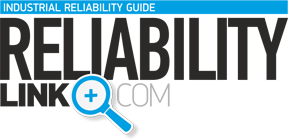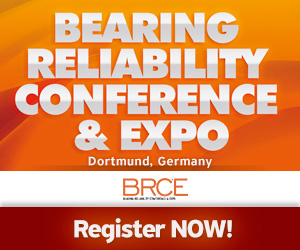Industrial Maintenance
Basics of Total Productive Maintenance
Total Productive Maintenance
TPM is a company-wide equipment maintenance system involving all employees–from top management to production line workers and the building custodians. It is but one of many approaches to maintenance. The word “total” in Total Productive Maintenance is common to:
¨ Total Equipment Effectiveness in pursuit of profitability, not simply maintenance cost reduction. (A reference to the Maintenance Iceberg.)
¨ Total Maintenance System including Maintenance Prevention (MP), Maintainability Improvement (MI), and good old-fashioned Preventive Maintenance (PM) is a maintenance plan for the equipment’s entire life span. MP translates into maintenance-free design and is pursued during the equipment design stage. MI translates into repairing or modifying equipment to prevent breakdown and to facilitate ease of maintenance.
¨ Total Participation of all employees.
The idea behind TPM is not revolutionary. Simply stated, it is cooperation to get the important job of maintenance done reliably and effectively! It is supplementary to, rather than a replacement of, established principles of successful maintenance management. Built around five focal points, TPM combines concepts of continual improvement, total quality, and employee involvement:
¨ Activities to optimize overall equipment effectiveness.
¨ Elimination of breakdowns through a thorough system of maintenance throughout the equipment’s entire life span.
¨ Autonomous operator maintenance (this does not imply that operators perform all maintenance).
- Use lower-skilled personnel to perform routine jobs that do not require skilled technicians.
- Use operators to perform specific routine maintenance tasks on their equipment.
- Use operators to assist technicians in the repair of equipment when it is down.
- Use computerized technology enabling operators to calibrate selected instrumentation.
- Use technicians to assist operators during shutdown and start-up.
- Day-to-day maintenance activities involving the total workforce (engineering, operations, custodians, maintenance, and management).
- Company-directed and motivated, yet autonomous small group activities. Small group goals to coincide with company goals.
¨ Continuous training
- Formal
- OJT – On Job Training
- One-point lessons
- Team members train each other
TPM Organization
¨ Operators and technicians are organized into zone teams.
¨ They are trained and certified to perform particular tasks in their zone as the need arises.
o One Point Lessons (1 Per Week)
o Higher levels of maintenance by operators are usually voluntary.
o Individuals who spot problems pitch in to restore equipment—resulting in less downtime.
¨ Major maintenance work, requiring high craft skills is performed by centralized (or less centralized) maintenance forces.
TPM Objectives
While the dual goals of TPM are zero breakdowns and zero defects, TPM is more about performance improvement, employee interaction, and positive reinforcement than it is about maintenance specific technology. Human resource factors and technical factors must be balanced. TPM works toward elimination of six formidable obstacles to equipment effectiveness:
¨ Downtime
¨ Equipment failure—from breakdown
¨ Setup and adjustment
¨ Speed Losses
¨ Idling and minor stoppages—due to abnormal operation of sensors, blockages of chutes, etc.
¨ Reduced speed—due to discrepancies between designed and actual speed of equipment.
¨ Defects
¨ Process defects—scrap, downgrades, rejects, returns, etc.
¨ Reduced yields—from all resources such as raw materials, packaging, energy, labor, etc.
Autonomous Maintenance (AM)
Group activities are promoted throughout the organization to gain greater equipment effectiveness. Operators are trained to share with maintenance personnel the responsibility for routine maintenance. This is referred to as “autonomous maintenance.” Routine maintenance normally includes:
¨ Housekeeping
¨ Equipment cleaning
¨ Protection of components from dirt
¨ Lubrication by operators
¨ Equipment inspection by operators and by maintenance
¨ Set ups and adjustments
Autonomous Maintenance may or may not include minor equipment repairs. You decide how autonomous maintenance is to be. Operators must receive a large amount of skills training and are certified as they progress through various skill levels. As operators become trained, an organized transfer of tasks takes place.
Equipment Management (EM)
The second focus of TPM is on equipment management – not simply on maintenance. EM is pursued through autonomous small group (team) activity comprised of operators, engineers, and technicians. Equipment improvement never stops!
The aim of team efforts is to optimize overall equipment effectiveness and eliminate breakdowns through a thorough system of maintenance throughout equipment’s entire life span. Through involvement, operators develop ownership of and an affinity for “their equipment.” Team members involved in problem solving develop a strong urge to see the problem fixed. They therefore participate in equipment management activities to make sure the problem does not recur. They take pride in their accomplishments.
The organization trains, solves problems, and works as teams. Peer support is important. Team competition is healthy and encouraged.
TPM Integration
The TPM approach does not preclude need of an integrated maintenance program including computerized support, formalized planning and scheduling, and insightful equipment history.
TPM Is an Investment
TPM is not a short-lived, problem-solving, maintenance cost reduction program. It is a process that changes corporate culture and permanently improves and maintains the overall effectiveness of equipment through active involvement of operators and all other members of the organization. The required TPM investment, as well as the return, is very high. Systematic TPM development and full implementation requires a three-year program. Over time, the cooperative effort creates job enrichment and pride that dramatically increases productivity and quality, optimizes equipment life cycle cost, and broadens the base of every employee’s knowledge and skill. Initially, the company must bear the additional expense of restoring equipment to its proper condition and educating personnel about their equipment.
In Conclusion
While TPM is popularly viewed as a Japanese concept, more accurately it should be viewed as a program that effectively integrates a number of maintenance management concepts that did not originate in Japan. However, to the credit of the Japanese, they have a knack for turning good ideas into enormously successful practices.
author: Ricky Smith CMRP Maintenance Leadership Advisor
One thought on “Basics of Total Productive Maintenance”
Comments are closed.




Pingback: www kemenpan com